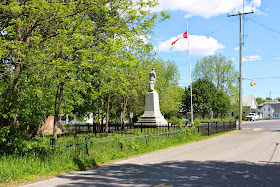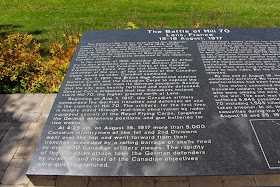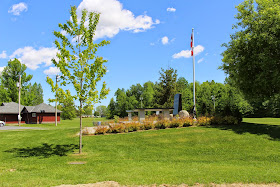The Man With Two Hats stands on the north side of Queen Elizabeth Drive opposite Dow's Lake. When driving by him he's easy to miss, as you might have your attention on the lake.
Supplemental Posts
▼
Sunday, May 31, 2015
Saturday, May 23, 2015
Morewood War Memorial
A fair way east of Highway 31 (Bank Street) on Morewood Road north of Winchester stands the small town of Morewood, Ontario. Morewood Road becomes Main Street in Morewood. On the north side of Main Street where Moffat Street to the south becomes Mill Street stands the Morewood War Memorial in a very fine well maintained condition.
 |
| "THEIR NAME LIVETH FOR EVERMORE" |
Friday, May 22, 2015
Winchester Township World War I Memorial
On the north side of River Road that runs east of Highway 31 (Bank Street) south of Winchester, Ontario, and just to the east of the Nation Valley Road Bridge a memorial to The Great War stands in front of an old white school house. What we now call World War I was then simply The Great War.
Thursday, May 21, 2015
Battle of Hill 70
The Battle of Hill 70 memorial occupies a prominent place in the Mountain Memorial Community Park on the south side of Clark Road in Mountain, Ontario.
 |
| This park is a memorial to 8,677 Canadian casualties in The Battle of Hill 70 World War 1 August 15 to 25, 1917 "An overwhelming victory for the Canadian Corps" |
 |
| A Project of the Mountain and District Lions Club September 2011 Dedicated 12 Nov. 1925 Re-Dedicated 16 Sept. 2012 Dévoilé le 12 Nov. 1925 Dévoilé de Nouveau le 16 Sept. 2012 |
 |
| In Memory of EUNICE JOHNSTON 1942 - 2011 An Inspiration for the Hill 70 Redevelopment Project May 3, 2012 |





















































